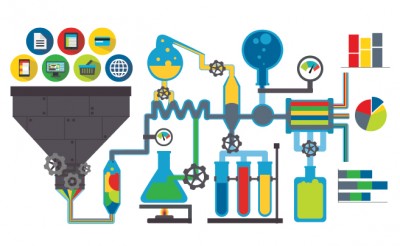Sentience: 5 steps to becoming a ‘sentient’ enterprise

The concept of a sentient enterprise may sound like the plot of a science-fiction novel. However, an organisation that can analyse data from customers, internal operations, and other sources really can gain enough insight to become self-aware.
The term ‘sentient enterprise’ was conceptualised by the president of Teradata Labs, Oliver Ratzesberger, and Professor Mohan Sawhney, at the Kellogg School of Management at Northwestern University.
According to Ratzesberger and Prof. Sawhney, a sentient enterprise can listen to data, analyse it, and make autonomous decisions on a large scale and in real-time. Additionally, it constantly evolves as its intelligence becomes more sophisticated.
The journey of such an organisation depends on its ability to embrace evolving analytics capabilities, beginning with today’s agile data warehouse. As sentient enterprises unlock the full potential of analytics on large data sets, or big data, they should gain the ability to outstrip their competitors by making smarter decisions much faster than companies without these capabilities.
5 steps to sentience
While many organisations have already made a start on the path to sentience, there are five key stages that they have to go through to achieve fully autonomous decision making:
1. Data agility
The agile data warehouse creates a balanced, decentralised framework for data. To take advantage of this, organisations need to create self-service data labs and automatic, built-in governance. By analysing what people are doing in the data lab, organisations can learn from their behaviours.
2. Behavioural analytics
Many organisations have changed their mindset regarding how to deal with customer data. Behavioural analytics moves beyond basic transactional data – such as how many products are sold in a particular period – and instead asks very different questions to gain new insights.
Behavioural analytics looks at all data points between transactions over time to formulate behaviour predictions in the future. Considering these behaviours instead of just transactions lets companies better understand how to interact with customers at all times.
3. Collaborative ideation
Working together to pool data and insights gives organisations a better view of trends and challenges. Self-service tools let more employees interact with data, which broadens the pool of intelligence and lets users engage with information in new ways. This leverages the trend towards enterprise social approaches to decision making.
4. Analytics application platform
Sentient enterprises generally need to transition from time-consuming, non-agile data movement and massive, centralised applications, to smaller, self-service apps that can let users reproduce insights. This lets more people within an organisation leverage data to create analytical outputs and insights.
5. Autonomous decision-making
Autonomous decision making is central to the idea of a sentient enterprise, and dramatically reduces the amount of time organisations spend sifting through dashboards and mountains of data in order to make decisions.
When companies leverage predictive technologies and algorithms to look at anomalies, they can focus most of their time on decision making instead of searching through the data itself. If they improve data agility and adopt a behaviour-centric mindset, organisations have the potential to become more productive, scalable and agile
However, they must also bring people together to increase collaboration, build repeatable processes, and use algorithms at scale. When a business integrates all of these capabilities to think about, listen to and learn from data, it becomes a true sentient enterprise.
Getting to this point takes knowledge and time, and each step can take a number of years. However, as enterprises complete each additional stage, they can become closer to being a single, sentient organisation.